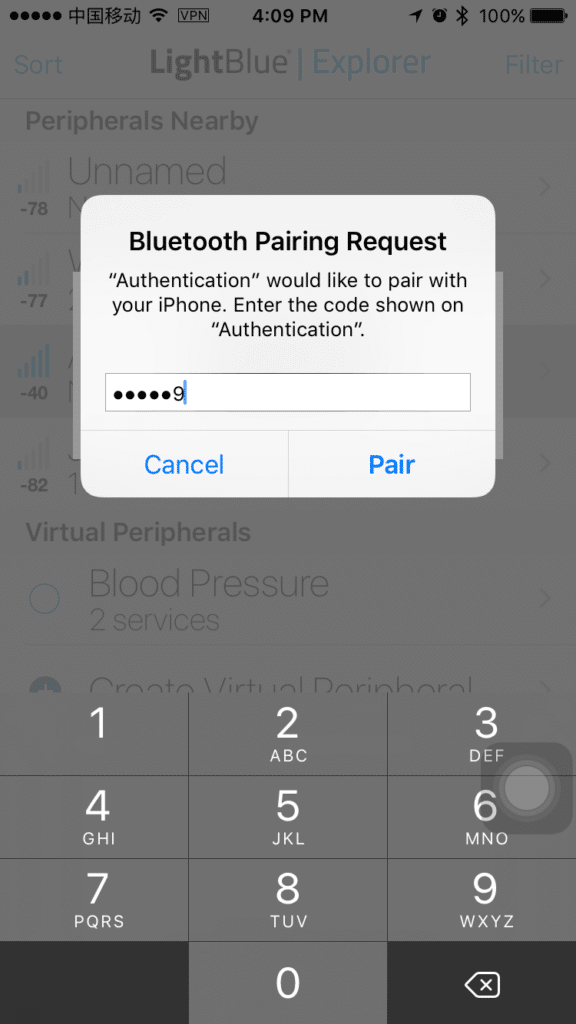What Keys Are Generated During The Bluetooth Pairing Process
- What Keys Are Generated During The Bluetooth Pairing Processing
- What Keys Are Generated During The Bluetooth Pairing Process Free
- What Keys Are Generated During The Bluetooth Pairing Process System
- What Keys Are Generated During The Bluetooth Pairing Process Free
Introduction to Wireless
Despite enhanced security level, there is a possibility of capturing the Input-Output capability and public keys during the initial phase of pairing and thus impersonating them. This paper introduces enhanced Bluetooth Secure Simple Pairing protocol by augmenting two new security levels. The protocol commits for public keys and IO capability. Bluetooth devices authenticate each other through the pairing process. Pairing checks whether each device is authenticated and if authenticated, it allows the devices to generate a common link key.

Wireless Technologies
Interference
Network Security
Glossary
- The process of pairing two BLE devices encompasses three phases explained below in detail. In the first stage, an exchange of information and initial pairing requests is done, about numerous requirements and capabilities for each device.
- The flow of the authentication process varies and usually depends on the interface capabilities of one device or the other. Sometimes pairing is a simple 'Just Works' operation, where the click of a button is all it takes to pair (this is common for devices with no UI, like headsets). Other times pairing involves matching 6-digit numeric codes.

Bibliography
Security Basics - 802.11 - 802.11 Solutions - Bluetooth
Like 802.11 security, Bluetooth is not meant to be an end-to-end security protocol, but actually only a means of security for the wireless portions of the network.
Bluetooth features three security modes:
What Keys Are Generated During The Bluetooth Pairing Processing
- Security Mode 1: Nonsecure: In nonsecure mode, a device will not initiate security procedures and authentication and encryption are completely bypassed.
- Security Mode 2: Service-level enforced security: In this mode, security procedures are begun after channels are established at the Logical Link Control and Adaptation Protocol level. A security manager controls access to different services and devices by using policies and “trust” levels.
- Security Mode 3: Link-level security: In mode 3, a device starts security procedures before channel establishment. Authentication, both unidirectional and mutual, and encryption are both supported, through the use of a secret link key between devices. The link key is generated the first time two devices communicate.
Link key generation:
Create new ssh key. Two devices communicating for the first time will go through an initialization phase; they will be “associated” at that point. The link key generation begins when the user enters identical PINs into both devices, which the devices use to generate their secret link keys. One of Bluetooth's security strengths is that in subsequent communications between devices, the link key is never transmitted outside of the device; the link key is simply used in cryptographic algorithms to generate matching sequences.
What Keys Are Generated During The Bluetooth Pairing Process Free
Authentication:
In Bluetooth, authentication is achieved through a challenge-response scheme whose purpose is to verify that the device requesting access has knowledge of the secret link key. The requesting device first sends its unique device address to the verifying device. The verifying device then sends a 128-bit random challenge from a random number generator. both devices use the E1 algorithm on the random challenge, the device address, and the link key to yield a 32-bit result. The verifier then compares the two results and authenticates the requesting device if the results match.
Bluetooth blocks repeated link key-cracking attempts by exponentially increasing the amount of time mandated between attempts. This technique fails against attackers who perform offline attacks to search the space of all PINs.
What Keys Are Generated During The Bluetooth Pairing Process System
Confidentiality:
What Keys Are Generated During The Bluetooth Pairing Process Free
Bluetooth encrypts its data transmissions with a stream cipher called E0. The key stream used is generated through an algorithm that takes the following values as input: the device address, a random number, a slot number, and an encryption key. The encryption key is produced from an internal key generator that takes as input: the link key, a random number, and a value from the authentication procedure. The key stream used to encrypt each data packet changes on a per-packet basis because the slot number is different each time, but all other variables remain static.